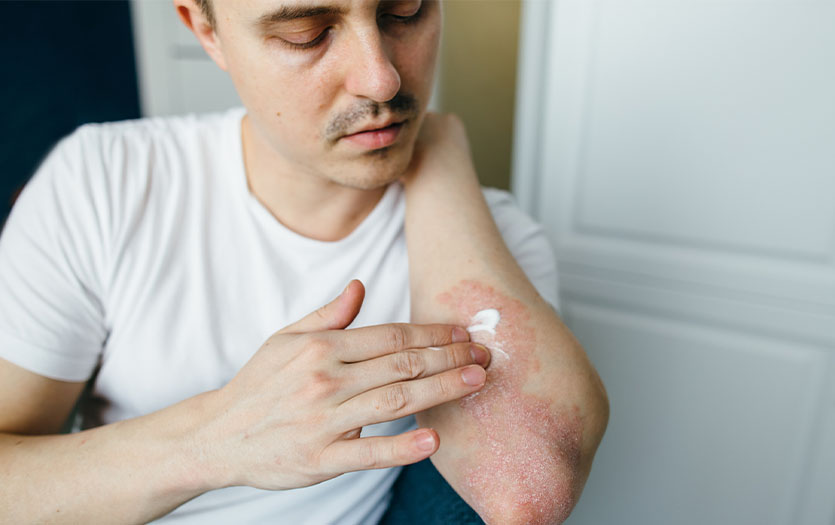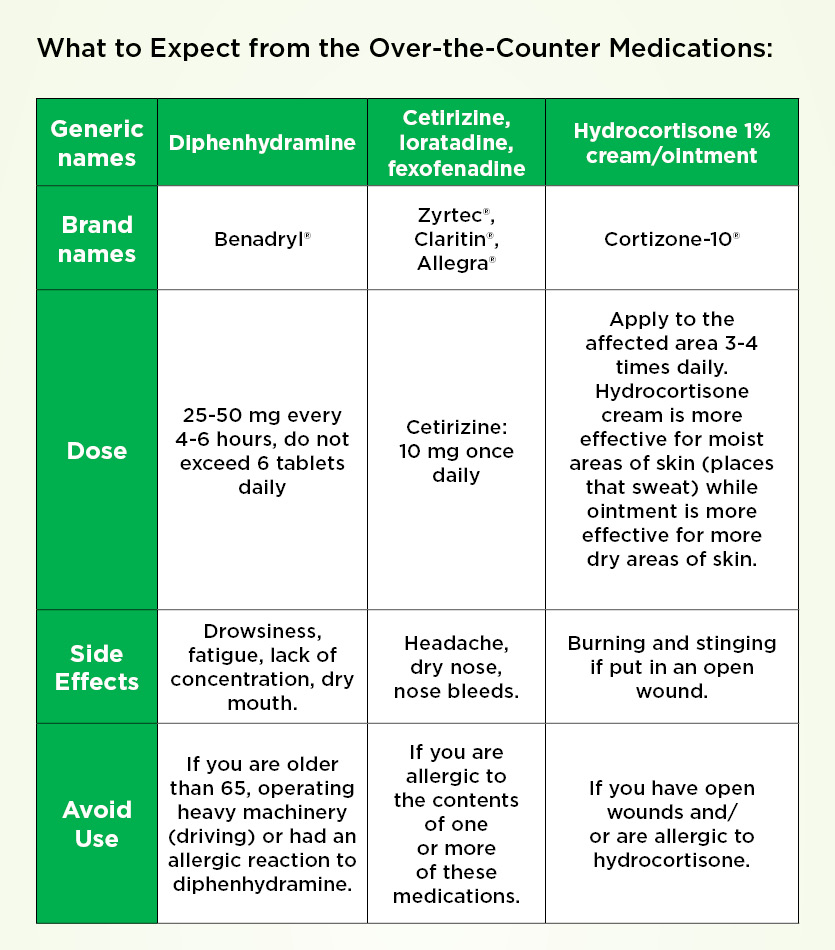
This post was written by Kyle Campaniello, PharmD candidate, Parkview Health.
Whether gardening, hiking or enjoying a picnic in the park, spending more time outdoors often means increased exposure to various irritants that can bother the skin. In this post, we’ll cover common skin reactions, their underlying causes and explore effective over-the-counter treatment options.
Rashes
Dermatitis, commonly referred to as a rash, typically presents as a change in the skin color accompanied by swelling. Although dermatitis impacts people from all racial backgrounds, its appearance can vary due to the amount of melanin in the skin. For individuals with fairer skin, a rash may appear pink or red. However, on individuals with deeper complexions, it can develop as a violet hue, ashen gray or darker brown color.
A rash can be caused by eating, drinking or the skin coming into direct contact with an irritant (contact dermatitis). Patches of discolored skin can appear on any part of the body.
Hives
In some instances, rashes can progress to the formation of hives. Bumps, welts or splotches on the skin are the primary indicators of urticaria (hives). Hives also vary in color, ranging from no change to red or purple.
This reaction is usually itchy but can also be painful or cause a burning sensation lasting several hours to multiple days. The reaction length depends on the amount of time exposed to the irritant and the severity of the physiological response. It's essential to remember that these raised areas can differ in size and may merge, forming larger plaques.
In more severe cases, the areas around the eyes and mouth can swell, causing angioedema. While hives are present on the skin's surface, angioedema triggers swelling below the inner layer of the skin. This type of reaction requires immediate medical attention and can be fatal if it spreads to the lungs or airways.
Triggers and causes
When exposed to an irritant, specialized cells near the blood vessels release the chemical histamine. Once this chemical is in the bloodstream, it can start the formation of a rash or hives.
Allergic reactions, bug bites, insect stings, medications and certain foods can trigger histamine release into the blood vessels.
The most common foods that cause allergic reactions are:
Environmental factors, such as extreme temperatures, stress (including exercise), sun exposure and infections can also prompt histamine release.
Treatment options
Most rashes resolve independently without medication if the irritant or trigger is avoided. To relieve itching, use an over-the-counter antihistamine such as diphenhydramine. Hydrocortisone 1% topical cream or ointment can help alleviate pain and swelling, but do not apply to open wounds.
Mild cases of hives are managed similarly to rashes by using antihistamines for itching and hydrocortisone cream for pain or swelling. Treating chronic hives lasting more than six weeks may require using non-sedating antihistamines such as cetirizine, loratadine or fexofenadine. If these medications do not work, consult a primary care provider or allergist for additional treatment recommendations. If the cause of hives can be identified, avoid interacting with it.
If any symptoms of angioedema occur, take a dose of diphenhydramine to reduce swelling and seek immediate medical attention.
Over-the-counter medications
While these medications are safe and effective for managing these reactions, it's crucial to be mindful of the best ways to use them and potential side effects.
Here is a breakdown of what to expect from common over-the-counter medications used to treat hives and rashes:

This overview is not all-inclusive. Before taking any medication, always review the labels on the drug's packaging for dosage instructions, potential side effects and warnings. Consult a pharmacist or primary care provider for any additional questions or concerns.



